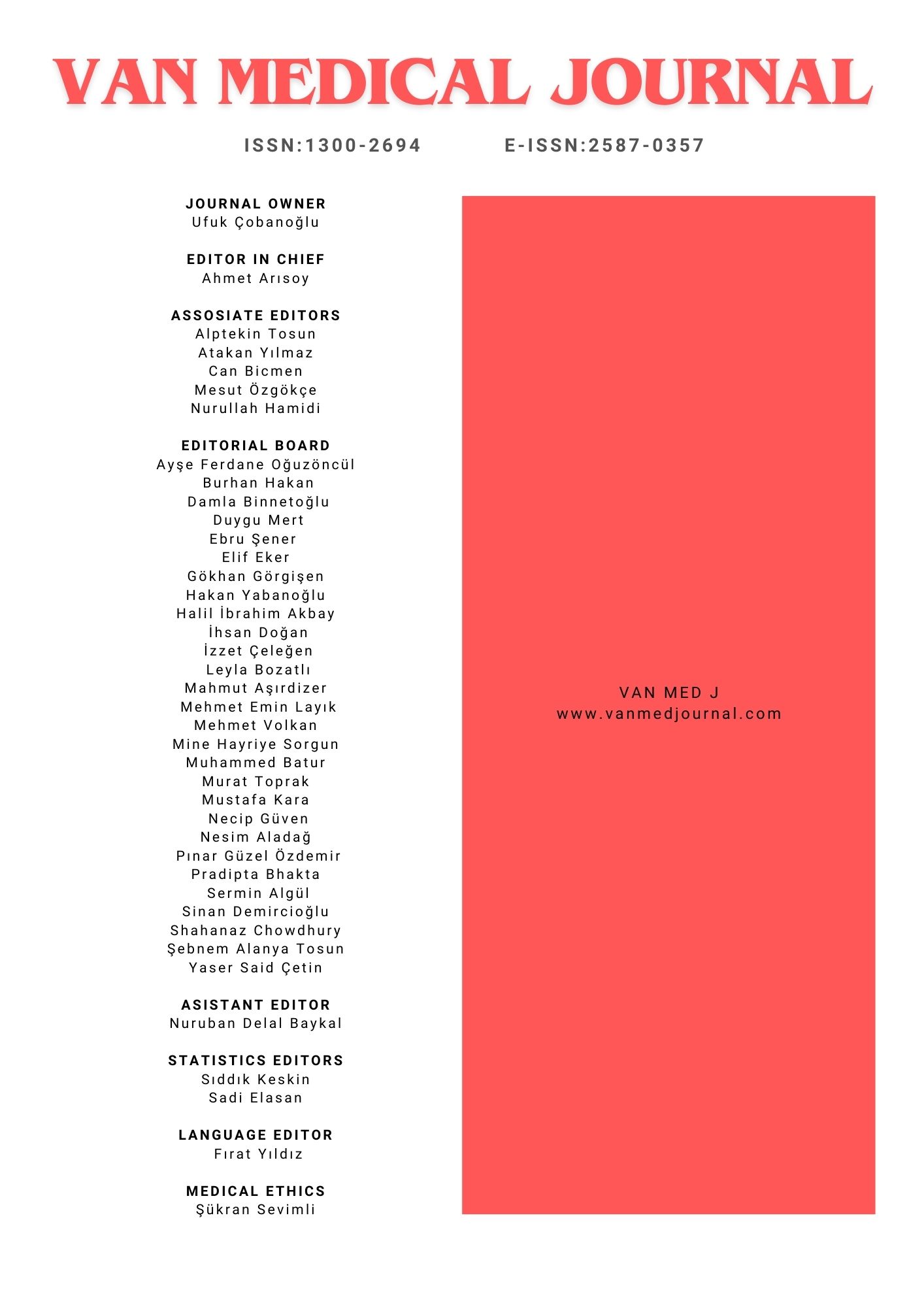Does Feeding Intolerance in Very Low Birth Weight Premature Infants Predict Necrotizing Enterocolitis?
Meliha Aksoy Okan, Elif Özalkaya, Sevilay Topcuoğlu, Nilgun Karadag, Güner KaratekinDivision Of Neonatology, Department Of Pediatrics, Zeynep Kamil Maternity And ChildrenINTRODUCTION: This study aimed to evaluate the relationship between necrotizing enterocolitis (NEC), risk factors, and feeding intolerance in very low birth weight premature newborns.
METHODS: The cases who were born under 30 weeks of gestational age and developed feeding intolerance were evaluated retrospectively for NEC.
RESULTS: Necrotizing enterocolitis was detected in 17(31.5%) of 54 patients with feeding intolerance. Besides, stage 3 NEC was detected in 2 patients without any signs of feeding intolerance. The mean birth weight of the patients was 970 ± 300 g and gestational age was 27 ± 5 weeks. When the risk factors were examined, preeclampsia, clean residues, biliary residues, more than 50% residues, abdominal distension and delayed stool exit were found statistically significant differences in the NEC group. Abdominal distention and the presence of more than 50% residues were the highest sensitivity among the two groups. The highest specificity was found in the presence of clean residues, the highest negative predictive value was abdominal distension, the highest positive predictive value was the presence of abdominal distention, and biliary residues.
DISCUSSION AND CONCLUSION: Although it is not recommended as a standard in larger premature and term infants, residual follow-up in very low birth weight premature babies may provide important clues in the diagnosis of necrotizing enterocolitis.
Çok Düşük Doğum Ağırlıklı Prematürelerde Beslenme İntoleransı Nekrotizan Enterokoliti Öngörür mü?
Meliha Aksoy Okan, Elif Özalkaya, Sevilay Topcuoğlu, Nilgun Karadag, Güner KaratekinSağlık Bakanlığı, Sağlık Bilimleri Üniversitesi Zeynep Kamil Kadın Ve Çocuk Hastalıkları Sağlık Uygulama Ve Araştırma Merkezi, Pediatri Departmanı, Neonatoloji Kliniği, İstanbulGİRİŞ ve AMAÇ: Bu çalışmada çok düşük doğum ağırlıklı (ÇDDA) prematüre yenidoğanlarda nekrotizan enterokolit (NEK) ile risk faktörleri ve beslenme intoleransı klinik bulguları ilişkisinin değerlendirilmesi amaçlanmıştır.
YÖNTEM ve GEREÇLER: Otuzuncu gebelik haftası altında doğan, beslenme intoleransı gelişen olgular NEK açısından retrospektif olarak değerlendirildi.
BULGULAR: Beslenme intoleransı olan 54 hastanın 17'sinde (%31.5) NEK tesbit edildi. Ayrıca 2 hastada beslenme intoleransı bulguları gözlenmeden evre 3 NEK tesbit edildi. Hastaların ortalama doğum ağırlığı 970±300 gr, gestasyon yaşı 27±5 hafta idi. Risk faktörleri incelendiğinde, NEK grubunda preeklampsi olması, temiz rezidü, safralı rezidü, %50'den fazla rezidü, batın distansiyonu, gaita çıkışında gecikme açısından istatiksel olarak anlamlı farklılık bulundu. Her iki grup arasında sensivitesi en yüksek olan bulgu batın distansiyonu ve %50'den fazla rezidü, spesifitesi en yüksek olan bulgu temiz rezidü varlığı, negatif prediktivite değeri en yüksek bulgu batın distansiyonu, pozitif prediktivite değeri en yüksek olan bulgu batın distansiyonu ve safralı rezidü varlığı idi.
TARTIŞMA ve SONUÇ: Daha büyük prematürelerde ve term bebeklerde standart olarak önerilmemekle birlikte, ÇDDA prematürelerde rezidü takibi yapılması nekrotizan enterokolit tanı değerlendirmesinde önemli ipuçları verebilir.
Corresponding Author: Meliha Aksoy Okan, Türkiye
Manuscript Language: Turkish

